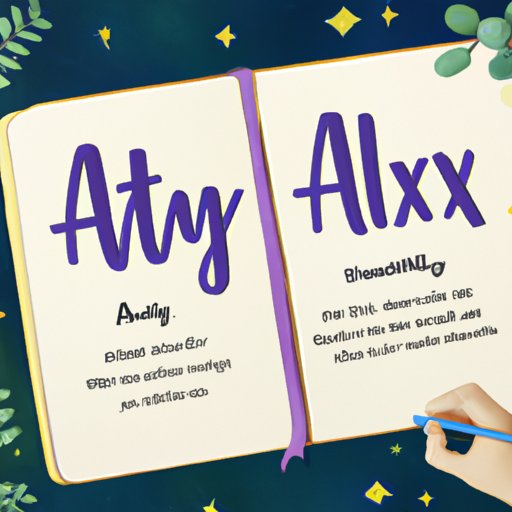
I. Introduction
Anxiety attacks at night can be triggered by a variety of factors, including stressful situations, anxiety disorders, or other emotional issues that may arise during the day. These attacks often manifest as physical symptoms such as rapid heartbeat, chest tightness, sweating, and difficulty breathing. Managing anxiety attacks at night is crucial for a good night’s sleep and overall mental health. In this article, we will explore techniques and tips to help calm anxiety attacks at night.
II. Deep Breathing Exercises
Deep breathing exercises involve taking a deep breath and focusing on the sensation of air moving in and out of your body. This technique helps to decrease the physical symptoms of anxiety and promote relaxation.
To perform deep breathing exercises:
- Find a comfortable position, either sitting or lying down
- Inhale deeply through your nose, filling your lungs with air
- Hold your breath for a few seconds
- Exhale slowly through your mouth, emptying your lungs completely
- Repeat these steps for a few minutes
Benefits of deep breathing exercises in managing anxiety attacks at night include reducing muscle tension, decreasing heart rate and blood pressure, and promoting a sense of calmness.
III. Progressive Muscle Relaxation
Progressive muscle relaxation involves tensing and relaxing groups of muscles in your body, one at a time. This technique helps to reduce muscle tension and promote relaxation.
To perform progressive muscle relaxation:
- Find a comfortable position, either sitting or lying down
- Starting with your toes, tense the muscles in your feet and hold for a few seconds
- Release the tension and relax the muscles in your feet
- Move up to your calves, tensing and holding for a few seconds before releasing
- Continue moving up your body, tensing and relaxing each group of muscles
- Finish by tensing and relaxing the muscles in your face
Benefits of progressive muscle relaxation in managing anxiety attacks at night include decreasing muscle tension, improving sleep quality, and promoting a sense of calmness.
IV. Mindfulness Meditation
Mindfulness meditation involves focusing your attention on the present moment and accepting your thoughts and feelings without judgment. This technique helps to promote relaxation and increase self-awareness.
To perform mindfulness meditation:
- Find a quiet and comfortable place to sit or lie down
- Close your eyes and focus on your breathing
- Notice any thoughts or feelings that arise without judgment
- Allow your thoughts and feelings to pass without attaching to them
- Bring your attention back to your breathing whenever your mind starts to wander
- Continue for a few minutes or longer if desired
Benefits of mindfulness meditation in managing anxiety attacks at night include reducing stress, improving sleep quality, and increasing self-awareness.
V. Guided Imagery
Guided imagery involves using mental images to promote relaxation and reduce anxiety. This technique can involve imagining a peaceful scene or visualizing yourself overcoming anxiety-inducing situations.
To perform guided imagery:
- Find a quiet and comfortable place to sit or lie down
- Choose a peaceful scene or situation to visualize
- Close your eyes and imagine the scene or situation in as much detail as possible
- Engage all your senses – what do you see, hear, smell, taste, and feel?
- Stay in the visualization for a few minutes or as long as desired
Benefits of guided imagery in managing anxiety attacks at night include promoting relaxation, increasing self-awareness, and reducing anxiety.
VI. Journaling
Journaling involves writing down your thoughts and feelings. This technique can help to reduce anxiety and promote self-awareness by exploring your emotions and identifying triggers.
To use journaling to manage anxiety attacks at night:
- Find any journal or notebook
- Write down your thoughts and feelings about the anxiety attack you are experiencing
- Identify any triggers or patterns that may have led to the attack
- Write down any positive affirmations or coping mechanisms that work for you
- Reflect on what you have written and look for any areas of concern or patterns
Benefits of journaling in managing anxiety attacks at night include reducing stress, increasing self-awareness, and promoting mindfulness.
VII. Seeking Professional Help
Seeking professional help is an important step in managing anxiety attacks at night. Mental health professionals can provide a range of treatments, including counseling, medication, and other therapies.
Advantages of seeking professional help to manage anxiety attacks at night include getting a proper diagnosis, receiving effective treatment, and developing coping strategies.
Techniques utilized in professional help may include cognitive-behavioral therapy, which focuses on changing negative thought patterns, or exposure therapy, which involves gradually exposing the person to anxiety-inducing situations which they can learn to manage.
VIII. Conclusion
Managing anxiety attacks at night is essential for a good night’s sleep and overall mental health. Deep breathing exercises, progressive muscle relaxation, mindfulness meditation, guided imagery, journaling, and seeking professional help are all effective techniques for calming anxiety attacks at night. It is essential to practice these techniques regularly and seek help if they are not working properly.
Remember, everyone experiences anxiety differently, and what works for one person may not work for another. Practicing these techniques regularly and discovering which ones work best for you can help to manage and prevent anxiety attacks at night.





